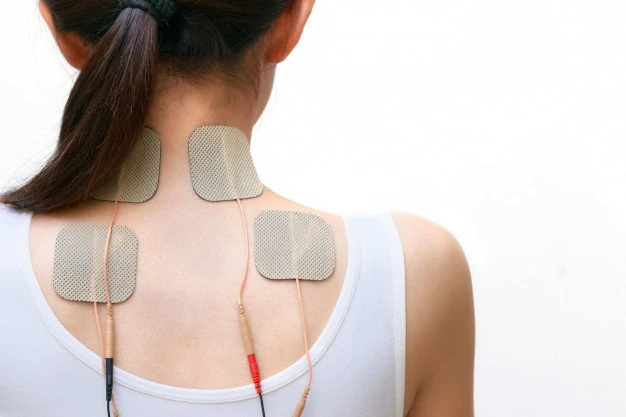Transcutaneous electrical nerve stimulation (TENS) is a type of physiotherapy that uses electrical impulses to relieve pain. The impulses are delivered through adhesive pads attached to the skin. TENS therapy is thought to work by reducing pain signals and stimulating the body’s production of endorphins, which are natural painkillers.
How TENS Therapy Works
TENS therapy works by interrupting the pain signals that travel from the nerves to the brain. The electrical impulses from the TENS unit can also stimulate the body’s production of endorphins, which are natural painkillers.
There are two main types of TENS therapy:
- Conventional TENS: Conventional TENS uses a high-frequency, low-intensity current.
- Acupuncture-like TENS: Acupuncture-like TENS uses a low-frequency, high-intensity current.
The type of TENS therapy that is used will depend on the individual and the specific pain condition.
Benefits of TENS Therapy
TENS therapy has several benefits, including:
- It is a non-invasive and drug-free treatment.
- It is safe and effective for most people.
- It can be used to treat a variety of pain conditions.
- It is relatively inexpensive.
Conditions that can be treated with TENS therapy
TENS therapy is a safe and effective treatment for a variety of pain conditions, including:
- Acute pain
- Chronic pain
- Arthritis pain
- Back pain
- Neck pain
- Labor pain
TENS therapy is typically used in conjunction with other pain management techniques, such as medication and physical therapy.
Risks and Side Effects of TENS Therapy
TENS therapy is generally safe, but there are a few risks and side effects to be aware of, including:
- Skin irritation
- Muscle soreness
- Burning sensation
TENS therapy is not appropriate for everyone. People with certain medical conditions, such as pacemakers or epilepsy, should not use TENS therapy.
If you are considering TENS therapy, it is important to talk to your doctor to see if it is right for you.


Leave a Reply